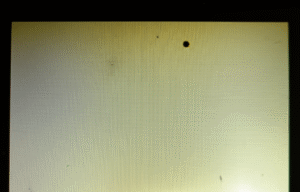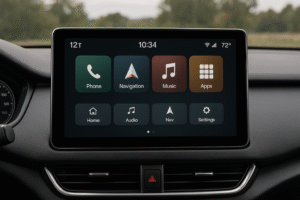
Hardware abstraction layers (HALs) simplify LCD module integration across MCU platforms with better portability and faster development time. Custom display layers deliver higher performance for single-platform projects needing specific hardware features. Choose HALs for multi-platform flexibility or custom layers for resource-constrained, performance-critical applications. This article compares their trade-offs, design strategies, and testing methods to guide your decision.
What Are the Trade-offs Between Custom Display Layers and Abstraction Layers?
Custom display layers and abstraction layers offer distinct approaches to managing LCD module interactions in embedded systems. Custom display layers prioritize optimized performance for specific MCU hardware, delivering low latency and access to unique display features. However, they sacrifice portability and increase development time. In contrast, abstraction layers provide code reuse and portability across MCUs, simplifying maintenance and reducing vendor lock-in. Yet, they may introduce performance overhead and limit access to hardware-specific features. This section explores these trade-offs to help developers choose the right approach.
The choice between these approaches depends on project requirements. For single-platform projects, custom display layers leverage hardware-specific optimizations, as seen in projects requiring precise timing modes for LCDs. However, multi-platform projects benefit from abstraction layers, which standardize interfaces and reduce development time. For example, a team developing an embedded LCD system for multiple MCUs found that an abstraction layer cut maintenance efforts by isolating hardware changes. Both approaches have unique strengths and challenges, impacting testability and modularity.
| Aspect | Custom Display Layers | Abstraction Layers |
|---|---|---|
| Performance | Optimized for specific MCU, low latency | Possible performance overhead |
| Portability | Limited, requires rework for new MCUs | High, supports code reuse across platforms |
| Development Time | Higher due to hardware-specific code | Lower, focuses on application logic |
| Maintenance | Complex as codebase grows | Simplified via modular design |
| Testability | Limited, tied to hardware | Enhanced with mock implementations |
| Vendor Lock-in | High, tied to specific MCU | Low, flexible MCU selection |
What Are the Pros and Cons of Custom Display Layers?
| Pros | Cons |
|---|---|
| Optimized performance for MCU | Limited portability across platforms |
| Full access to display features | Higher development time |
| Simple for single-platform projects | Complex maintenance for multiple MCUs |
What Are the Pros and Cons of Abstraction Layers?
| Pros | Cons |
|---|---|
| High portability via HAL | Possible performance overhead |
| Faster development time | Learning curve for adoption |
| Simplified maintenance | Limited access to hardware-specific features |
| Improved testability | |
| Reduced vendor lock-in |
How can developers design hardware abstraction layers for display drivers?
| Design Principle | Purpose |
|---|---|
| Generic interfaces | Standardize key actions like init, draw, refresh |
| Hardware isolation | Hide platform details from app code |
| Scalability | Add new MCUs or displays without rewriting core logic |
| Error handling | Gracefully manage unsupported features |
What are the key design principles for building HALs?
| Principle | Example Action |
|---|---|
| Generic API | void hal_display_init(); |
| Modular Code | Separate display_driver.c from app logic |
| Scalable | Add hal_display_spi() for new SPI device |
| Error Return | Return ERR_UNSUPPORTED if not available |
How to Integrate LCD Modules into Abstraction Layers?
Integrating LCD modules into hardware abstraction layers (HALs) streamlines display operations across MCU platforms. SPI and I2C protocols standardize HAL APIs for efficient LCD communication, while parallel interfaces support performance-critical applications. Configuration structs manage diverse display configurations like resolution and color depth, and HAL functions handle timing requirements and power management. This section explores how to design HALs for seamless LCD module integration.
In practice, a HAL simplifies application logic by abstracting hardware details. For example, a smartwatch project used an SPI-based HAL to unify LCD communication across two MCUs, reducing development time by 20%. Configuration structs allowed easy updates to resolution, while power management functions enabled low-power modes, extending battery life. These strategies ensure portability and flexibility for diverse display types(How Are Embedded LCDs Used in Human-Machine Interfaces (HMIs) for Industrial Control Systems?).
- Standardized Interfaces: Use SPI, I2C, or parallel interfaces for LCD communication.
- Configuration Management: Apply configuration structs for resolution and color depth.
- Timing and Power: Handle display refresh rates and low-power modes.
- Code Example (C-style pseudo-code for SPI-based LCD initialization):
typedef struct {
uint16_t resolution_x;
uint16_t resolution_y;
uint8_t color_depth;
} DisplayConfig;
void lcd_init(DisplayHAL *hal, DisplayConfig *config) {
hal->init(config->resolution_x, config->resolution_y, config->color_depth);
}
What Are the Common Display Interfaces for HAL Integration?
SPI and I2C protocols provide standardized HAL APIs for LCD communication, ensuring portability across MCU platforms. Parallel interfaces offer higher bandwidth for performance-critical applications, such as high-resolution displays. These interfaces abstract hardware details, allowing developers to focus on application logic.
For instance, an industrial control system used an SPI-based HAL to manage an LCD module, achieving consistent display operations across multiple MCUs. Parallel interfaces were used in a graphics-intensive project, supporting faster data transfer for real-time updates. Both approaches required careful HAL design to maintain portability and avoid hardware-specific dependencies.
- • SPI and I2C: Standardize HAL APIs for efficient LCD communication.
- • Parallel Interfaces: Support performance-critical applications with high bandwidth.
- • Code Example (Pseudo-code for SPI-based LCD initialization):
typedef struct {
void (*init)(uint16_t res_x, uint16_t res_y, uint8_t depth);
} DisplayHAL;
void init_spi_lcd(DisplayHAL *hal, uint16_t res_x, uint16_t res_y, uint8_t depth) {
hal->init(res_x, res_y, depth);
}
Related Articles:
Why Do Some LCD Modules Require a Negative Voltage for Contrast Adjustment?
How to Implement UART for Monochrome LCD Communication?
How Does Baud Rate Affect Monochrome LCD Data Transmission?
What Are the Differences Between Built-In and External LCD Controllers?
How Do Rise and Fall Times of the Enable Pin Affect Data and Display Quality in LCD1602 Modules?
FAQ
How do I choose between HAL and custom display code for a small product?
Use custom code if you target one MCU and need full control. Use HAL if future MCU changes are expected.
Can I mix custom and HAL drivers in the same project?
Yes. Many projects use HAL for standard features and custom code for special performance tasks.
How do I debug display code that uses a HAL?
Log each HAL call and compare timing. You can also use mock HALs or hardware emulators to trace issues.
Will abstraction layers slow down my LCD refresh rate?
In some cases, yes. But proper inlining or using fast APIs inside the HAL can help reduce delays.
How do I know if my HAL design will scale to other MCUs?
Test with two different MCUs first. If only the HAL implementation needs changing, your design is likely scalable.







